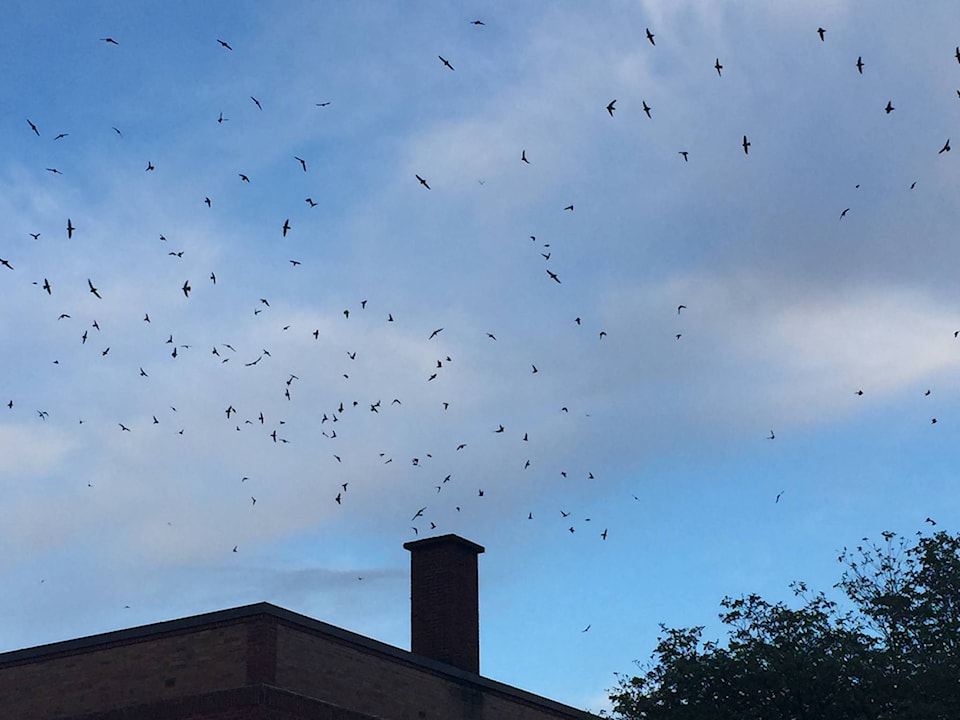They circled in the hundreds overhead - like a scene from Hitchcock’s The Birds - and they have come to roost in one of Courtenay’s tallest chimneys.
It is not out of the ordinary for Vaux’s swifts to make their way to the Comox Valley - they are known to swarm rooftops in Cumberland - but an appearance last week near downtown Courtenay may be a first for the small birds native to North and South America.
“I believe it is the first year for the Courtenay Museum’s chimney to be used as a roost … it’s very interesting that they chose our building,” said the museum’s curator, Pat Trask last Friday evening, as a large crowd of onlookers, photographers and bird watchers gathered in the parking lot behind the museum.
“Someone did mention a few years ago that maybe (we) should prepare that chimney for the Vaux’s because they might show up here some day, and here they are by the hundreds and sometimes by the thousands.”
The birds circle the building every evening until dusk, and around 8:30 p.m. they begin to dive into the tall brick chimney in groups at a time.
Trask noted it was an employee at the credit union across the street who first noticed the birds near the building.
“(Then) one of our employees saw a bunch of birds coming out of our chimney this morning like a big plume of birds. We thought, ‘what is that all about?’ So we leaned that those are Vaux’s Swifts.”
The birds breed from southern Alaska to Mexico, and eastern Panama and northern Venezuela. They prefer habitats such as old growth coniferous or deciduous forest, particularly large, hollow trees for nesting.
Because there are very few large, hollow trees in Courtenay, explained Trask, they chose a chimney instead.
“It’s brining a lot of people out here to see them, and it only happens at night and first thing in the morning.”
Vaux’s swift lay eggs between March and July, and spends winters in the tropic. They are expected to roost in the chimney of the museum until the end of the month.



